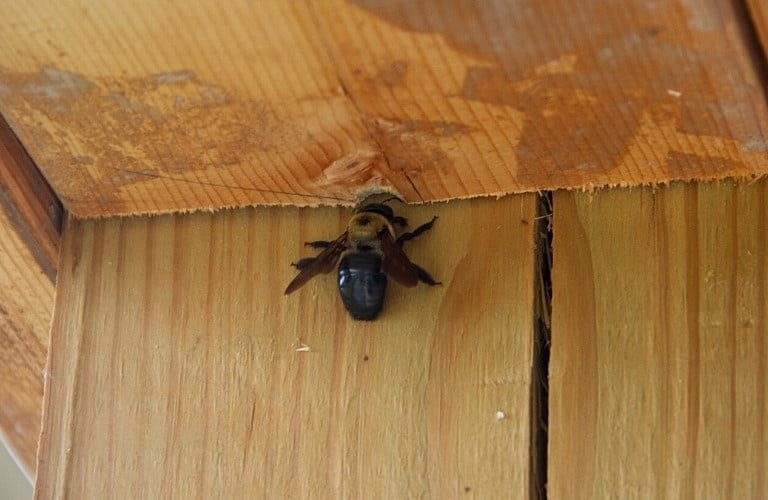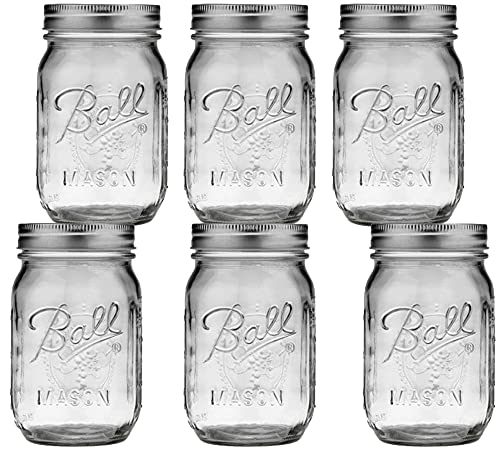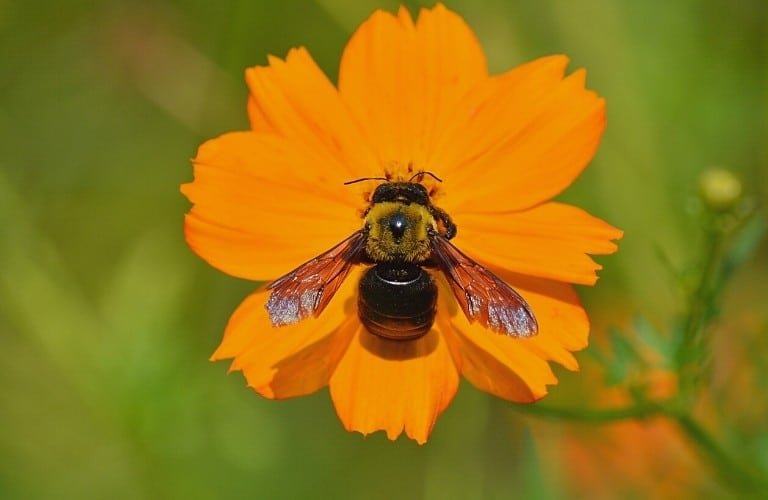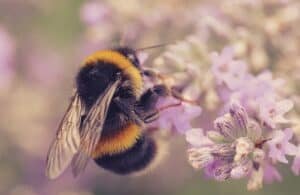Bees are a gardener’s best friend because they pollinate plants, which help them grow. They’re necessary for humanity to live; without pollinated plants, we can’t eat.
However, the carpenter bee has earned its reputation as a pest since it drills holes in wood to lay eggs.
What are the best carpenter bee baits? Placing a lure, such as a dead carpenter bee, inside a bee house or bee trap far from your home will lure carpenter bees to another location. Certain oil-based solutions are also effective carpenter bee bait for both indoor and outdoor use. Baiting coupled with repellents applied to your home will eliminate the problem.
Bait can be utilized to remove carpenter bees from your home without killing them, but sometimes more drastic measures are necessary if they’re chewing up your home.
In the following, you’ll learn how you can efficiently take care of a carpenter bee problem without spending a fortune and potentially harming beneficial insects in the area.
Don’t miss out on more tips for dealing with carpenter bees. Click here to see our full lineup of articles on these destructive yet beneficial bees.
Carpenter Bee Bait – What to Look For
Carpenter bee bait is used to draw bees to areas away from the wooden structures on your property. Bait can come in many forms, whether it’s a wooden structure or something you put inside of a trap.
Types of Bee Bait
There are four main types of bait:
- Bee Houses
- Bee houses, or bee hotels, are meant to house bees instead of harm or kill them – an important feature considering that carpenter bee numbers are steadily declining.
- They also encourage population growth, which could potentially become a detriment to your backyard. However, these structures are good ways to get the bees away from the wood you don’t want them to damage.
- Bee Traps
- Bee traps come in several forms, but the most common version is a wooden box with a jar underneath. Solitary bees fly into it looking to make a nest and then get caught in the jar. There are also sticky traps that bees will get stuck on and can’t get away from.
- Lures
- Lures are meant to go inside of traps or on bee houses to attract them. If you’re struggling to get bees to go to a bee house, using a lure will draw them in. Lures are typically designed to mimic natural bee pheromones.
- Believe it or not, one of the best lures for carpenter bees is the scent of a dead carpenter bee. It’s believed that the bees assume that because the “owner” of the house is dead, the “property is up for grabs,” and they’ll flock to it.
- Repellents
- Although they aren’t quite bait, repellents are another way you can entice bees to leave the areas you don’t want them. If you set up a bee house and spray your home with repellent, they’ll probably flee to where you want them to go.
Effectiveness
The effectiveness of a carpenter bee bait will vary depending on certain factors. If a lure isn’t scented strongly enough, they might not be able to detect it. If a bee house or trap is placed away from flowers, they may not be inclined to go near it.
A person can swear that a product works perfectly for them, yet it may not work for you. It all depends on the bees and the environment you’re working with.
Safe for Use Around People and Pets
Most bee baits and traps are safe to use around people and pets. If you use anything with essential oils, you risk experiencing allergic reactions.
Bee houses can increase the population.
Female carpenter bees have stingers but will only sting if provoked or threatened, so if you have curious children or pets, keep an eye on them if they start to go near the bee house.
Pesticides are harmful to people and pets, which is why we recommend choosing a natural bait or trap before turning to pesticides.
Interestingly, some people choose to avoid pesticides when baits and traps have failed and use WD-40 to get rid of troublesome bees. We discuss this potential solution here.
Ease of Use
The best thing about bait is that they require little maintenance. Many options require to be set up once and left alone so it can attract bees.
Reusable
Bee houses and traps are reusable. Bees will eventually leave the house, but new ones will come in and take over abandoned nests. Traps can be emptied once they’re full.
Repellents and baits can be applied several times as needed. If you make your own with natural ingredients, you can make a supply that will last you for several months if necessary.
Disposable
Sticky traps aren’t reusable. Bees will get stuck to them and eventually die.
The trap can be used until there’s not a sticky surface available anymore. At that point you’ll need to throw it away.
Now that you know what to look for when it comes to bee bait, let’s take a look at some indoor and outdoor options.
Best Indoor Carpenter Bee Bait
Carpenter bees live outside where the plants are, although they’ll drill holes into the side of your home if it has untreated wood.
Sometimes, this can mean that they find their way into your walls and may attempt to drill new holes to find their way out.
Since you don’t want to attract bees into your home, there aren’t many indoor bait options available.
However, there are a variety of ways you can repel or trap bees that have made their way inside. Let’s look at a few of those options.
BeNatu Citrus Oils Set
Bees hate the smell of citrus, so citrus oils are a safe way to repel them. This essential oil set from BeNatu has three different scents: lemon, bergamot, and mandarin.
They smell nice to humans but not to bees, so you can use them inside your home if necessary.
Add about 10 drops of oil to a spray bottle of water and spray the area where bees are drilling and building nests.
They should leave the area soon. Apply daily or weekly as needed until all the bees are gone.
Essential oils can stain if undiluted, so don’t use them without adding them to water.
Pros:
- Three different scents so you can create a scent you enjoy.
- Not diluted with other oils.
Cons:
- Can be irritating or harmful to the skin if not diluted.
Pure Body Naturals Sweet Almond Oil
Almond oil is another oil that repels bees. It’s a carrier oil which means you can mix it with citrus oils to create a more potent repellent.
Almond oil is pretty strong, so it can deter bees for up to four months, which means you don’t have to apply it as often.
You don’t have to dilute almond oil. You can apply it directly to the wood with very little or no staining.
Pros:
- Comes with a dropper.
- Vegan and not tested on animals.
- Can be effective for up to four months.
Cons:
- Needs to be diluted before using.
Happy Belly Granulated Garlic
It’s safe to say that bees hate the smell of garlic more than essential oils. You could use a garlic and water mixture, but garlic powder is stronger and more effective.
You can use whatever you have in your pantry, but we recommend the Happy Belly container. It’s large and will last you a long time so you can continue to keep bees out of your home.
Pros:
- Large container for continual use.
- Repels most insects.
- Multipurpose – use it every day for cooking.
Cons:
- You may need to vacuum after the bees are gone.
Ball Mason Jars
If you’re a fan of bees as long as they’re not inside your home, a mason jar is an excellent way to keep them out.
Look for the hole they drilled that’s causing them to enter your home.
Attach the jar so that it surrounds the hole. Put bait inside the jar or spray the outside entrance with repellent.
Once you’ve caught a bee, you can quickly remove the jar, cover the top, and release the bee in an area you’d prefer it to be in.
Pros:
- Removes bees without killing them.
- Good for the stray bee that finds its way into the wall.
Cons:
- Not the most efficient way to remove bees.
Donaldson Farms Carpenter Trap Lure
This lure is made from natural ingredients and doesn’t harm the environment. It allows you to drop into a trap (or wherever you would like to attract carpenter bees) and wait for them to arrive!
Pros:
- Natural ingredients.
- Safe to use indoors.
- Not an aerosol spray so it’s easier to use.
Cons:
- Strong odor.
- Might stain surfaces due to oils.
Best Outdoor Carpenter Bee Bait
Bees are usually found outside but will seek shelter inside the wood, whether it’s your house, a swing set, or a shed.
These baits and traps are great for outdoor usage, and many of them are bee friendly.
Lakota Earthlink Naturals Carpenter Bee Trap Lure
This lure is meant to be used with a trap or bee house.
It attracts bees to the structure you put it in so they’ll be drawn away from your property they’re damaging.
This is a great product to use if you want to keep the bees in your garden but don’t want them drilling your stuff.
Pros:
- Made with natural ingredients.
- No need to dilute – apply directly to bee house or trap.
Cons:
- Not a 100% guarantee to work.
Wildlife World Mason Bee Management System
Although this product is titled for mason bees, they’ll attract all solitary bees, including the carpenter varieties.
If you’re looking for a bee-friendly solution, this one’s for you.
When paired with a bee lure and placed near flowers or vegetable gardens, you shouldn’t have any bees living in your house or deck anymore.
This is a “pro-bee” product and will likely increase or maintain the current population, so this isn’t recommended if you don’t want bees at all.
Pros:
- Draws bees away from your home.
- Increases pollinator population for your plants.
- Built from responsibly sourced materials.
Cons:
- Might increase the population of pests around your home.
Original B Brothers Carpenter Bee Trap
This trap, once baited, will attract solitary bees who are looking for a place to build a nest. Once they’re inside, they’ll have difficulty getting out and will eventually get stuck in the jar.
It won’t attract bumblebees because they go back to their queen and hive rather than find their own place to build a nest.
The bees that get trapped will eventually die unless you want to take the time to release them away from your home.
As you can likely see from the image, this kind of trap is relatively easy to build as a DIY carpenter bee trap if you have some basic woodworking tools available to you.
Pros:
- Won’t attract bumblebees.
- Can endure severe weather.
Cons:
- Not guaranteed to be 100% effective.
RESCUE! TrapStik
This sticky trap will catch carpenter bees with its sticky surface.
The bright colors are used as an attractant instead of chemicals and odors, so it’s a pleasant way to catch pests.
They’ll also catch wasps, so they’re great to place on your patio. The bees that get caught will die since they can’t get away from the trap.
Pros:
- No chemicals or odors.
- Doesn’t attract beneficial pollinators.
- Bird guard prevents small birds from getting stuck.
Cons:
- Beneficial insects may occasionally get trapped by accident.
BioAdvanced Termite and Carpenter Bee Killer
This is a pesticide aerosol foam that works similarly to the natural version we mentioned above.
Pesticides are harmful to bees, people, pets, and the environment, so we do recommend choosing a natural option first.
But, if your home is infested and you or others are getting stung, this is a quick fix to your problem.
This will kill carpenter bees and termites on contact. Spray it directly into the holes they drilled and they should be dead within just a few minutes.
It’s best to use this product in the morning or night when the bees aren’t active.
Pros:
- Kills on contact.
- Expands to fill the holes.
- Easy to use in hard to reach places.
Cons:
- Contains harmful chemicals.
Best Practices for Preventing an Infestation
Bees are beneficial insects that play a huge role in keeping the earth alive, so it’s important to make sure you identify carpenter bees correctly.
The Carpenter Bee
Carpenter bees are a species of bees that have about 500 different types within the species. While their appearance will vary between the types, they typically have a shiny black abdomen and long triangular wings. Many are the classic black and yellow, while others may be solid black or even bright blue as is the case with the blue carpenter bee.
Carpenter bees are solitary bees. You won’t see them swarming around a nest, but they’ll instead be on their own.
A female carpenter bee will raise her young in a nest she drills out in wood. You may see a male bee flying around the nest to protect it. Sometimes multiple females will group together and build their nests in the same area, but this isn’t the same as a queen bumble bee having worker bees and a hive.
Bees Often Mistaken for Carpenter Bees
It’s easy to confuse different types of bees since they’re small and hard to get a good look at. You can usually tell bees apart by their behavior.
Solitary bees typically live in wood and collect pollen for their offspring to eat, and colony bees live in a hive and collect pollen to make honey. Solitary bees don’t make honey or wax.
The Mason Bee
The mason bee is a solitary bee commonly confused with carpenter bees.
They’re often black with brown or yellow and have hairs on their abdomen while carpenter bees do not.
Mason bees are incredibly good pollinators thanks to their fuzzy abdomens.
They are typically smaller than carpenter bees and are often blamed for damage caused by carpenter bees.
The Bumble Bee
The bumble bee is the bee everyone instantly thinks of. Any cartoon drawing of a bee is most likely going to be a bumble bee.
They’re striped yellow and black, fuzzy, and have rounded wings. They live in hives, serve a queen bee, and won’t drill holes into your home.
Basic Guidelines
Carpenter bees will drill holes into wood to build their nests and raise their young.
They can ruin homes, sheds, decks, and benches, which is why they’re considered to be pests despite their important pollinating role in the world.
Do their destructive ways outweigh the benefits they provide? Find the facts here so you can decide for yourself.
Fortunately, you can deter these little drillers from making your house their home by taking a few preventative measures.
Don’t Leave Wood Untreated
Carpenter bees typically avoid wood that’s stained or painted.
If you have a wooden shed, deck, or other structure on your property, leave no plank untreated. Staining is a simple way to keep bees out and it also makes the wood look nicer.
Seal Existing Holes
Carpenter bees will make use of empty nests before they drill their own.
Sealing up the holes with caulk is a great way to deter them from reusing the holes in your home.
If wooden structures have holes from other insects, seal those up too.
Turn Up the Volume
The vibrations of loud music bother carpenter bees. Hook up speakers and play music frequently when you’re outside.
You don’t have to drive your neighbors crazy, but the music should be loud enough to cause vibrations. Use a speaker that allows you to boost the bass.
Provide Them a Home
The best – and kindest – thing you can do is provide an alternative space for the bees to make their home.
A DIY carpenter bee trap made of untreated wood or a “bee hotel,” like the Wildlife World Mason Bee Management System, are great ways to encourage bees to stay away from your house.
Place these bee houses near plants or in flowerbeds to make them irresistible.
| Preview | Product | Rating | |
|---|---|---|---|

|
Wildlife World Interactive Wooden Bee House -... | Check Price on Amazon |
While carpenter bees may not live in a hive with a queen like the honey bees, they still collect and disperse pollen and will appreciate a short commute to the flowers.
Be sure to read our complete guide for getting rid of carpenter bees, including numerous options that will deter rather than kill.
Final Thoughts
Bee bait can be a trap or bee house or a lure that goes inside the structures. Repellent works well when you’re also using bait elsewhere.
If you have carpenter bees in areas you don’t want them, the idea is to draw them away. Using multiple methods at a time will be more effective and will produce results quicker.















